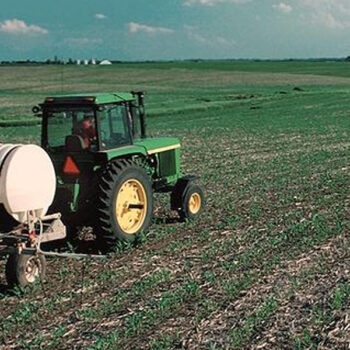In this article, the author highlights the importance of, and potential for “place of origin” branding in agricultural and food products, and argues that a focused Government initiative is required for India to tap its potential.
Place of origin branding is when producers or marketers use the product’s association with a geographical location in its marketing or positioning. The geographical location can be a country (e.g. French Wine, Swiss Cheese, Belgian Chocolates), a region (e.g. Scotch Whisky, Kashmiri Saffron), or a town (e.g. Agra Petha, Hyderabadi Biriyani, Darjeeling Tea). One could also consider prominent use of labels such as “Made in Japan” or “Product of India” or “Designed in Italy” beyond the statutory requirement as a place of origin branding.
Benefits of “Place of Origin” Branding
Scotch whisky is a classic example of a Place of Origin branding that has made an impact and helped many participants in the value chain. The country branding has helped the country achieve a global scale in this business helping multiple distilleries in the country grow beyond the traditional geographical boundaries that they cater to. Scotch whiskies command a premium in global markets, and even lesser-known distilleries in the region benefit from the label. The industry has much better stability of business owing to high consumer loyalty. Even the supporting local ecosystem such as bottle and packaging material manufacturers, ingredient producers, traders, transporters, etc. benefit from the global popularity of these products.
What products can be branded
Place of origin branding works best when the end consumer values the association of a product with geography. However, it is not essential that the place of origin branding is done only for the end consumer. Such branding can also be for B2B segments. For example, lamb meat from New Zealand has a reputation among chefs across the world because they are succulent and tender, and enhances the taste of the dish. Similarly, products such as Guntur Chilli, Kashmiri Saffron, etc. find their place as valuable ingredients because of their unique properties, not just because of consumer preferences.
Then there are products that have a strong association with geography but need not be made in that location. London Dry gin is an example of a product that could have been made anywhere. However, to claim to be a London Dry, the base spirit must be distilled to a completely neutral 96% alcoholic spirit, and all the flavors must be added through distillation and be of natural plant materials. Apart from having no synthetic content, it can also not have anything added after distillation except for water and a little sugar. Brands that have London Dry gins offered following this process include Bombay Sapphire, Beefeater, Tanqueray, etc. most of which are not made in anywhere close to London.
Geographical Indicator (GI) Tagging: An Untapped Opportunity for India
Prior to 2003, geo-tagging of products did not have a formal and globally recognized legal structure, and such linkages were protected mostly through general IP laws and individual efforts of organizations to protect their rights to the tag. This had its limitations because of the laws being largely country-specific, with difficulties in enforcement. Recognizing the challenges this poses for business and consumers, WTO enacted the Geographical Indications of Goods (Registration and Protection) Act, 1999, which came into effect from 15 September 2003. This law formalized Geographical Indicator (GI) tagging which identifies a good as “originating in the territory of a member, or a region or a locality in that territory, where a given quality, reputation or characteristic of the good is essentially attributable to its geographic origin.” The GI tag ensures that none other than those registered as authorized users (or at least those residing inside the geographic territory) can use the popular product name.
As per a 2018 count published on the World Intellectual Property Organisation website, there are over 200,000 GI tagged products worldwide, of which over 61,000 are in the category of “Agri Produce and Foodstuff”. For a country known for its wide range of regional agricultural produce and cuisine, India has a mere 110 GI tagged products in this category. Even at an overall level, there were only 330 GI tagged products in India in 2018.
What India needs to do
The initiative for GI tagging has to be taken by any organization or authority that represents the interest of producers of the goods or products concerned. This has to be industry bodies or associations that represent the producers, or the Government.
In this context, it is advisable that the Government studies the process followed by other countries including China, which has made considerable progress on this front. China not only does a significant drive for GI registration across provinces but also gets into bilateral agreements (such as with the EU) that protect the industry from counterfeits.
In India, one of the challenges is that producers are not well organized, and even where they are, awareness levels of GI tagging are very low. Having strong industry bodies to drive the initiative is also important as the value of GI tagging is not realized just by the registration, but by strong processes to ensure that only legitimate and quality products are able to carry the tag. If that does not happen, the GI tag will lose value.
The importance of Governments to take the lead in pushing the initiative of GI tagging should be around two areas: (1) create and strengthen local industry bodies that can drive registrations and also enforcement of quality, and (2) increase awareness, and proactively drive GI registrations.
What will it take for the Government to take up such a drive? Can it be done by the Departments of Agriculture and Food Processing, or does it require the support of a dedicated organization? Should the drive be at the Central Government level or by the State Governments? There are more questions than answers at the moment, and I hope as a nation we are able to find answers soon.





